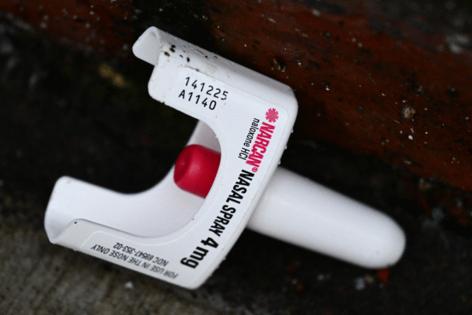What is this drug 'more powerful than fentanyl'? California sees first protonitazene criminal case
Published in News & Features
A 22-year-old found dead in the front seat of his car had taken protonitazene pills, a drug “more powerful than fentanyl,” before his death, California prosecutors said.
The man, identified by his mother as Bryce Jacquet, met up with a 21-year-old Santa Clarita man to buy the pills before getting in his car and driving to his mother’s home, according to KCAL and a Nov. 21 news release from the U.S. Attorney’s Office for the Central District of California.
The 21-year-old was “charged with one count of distribution of protonitazene resulting in death,” prosecutors said. He pleaded not guilty, and a trial was set for early next year. He is in custody without bond.
On April 19, Jacquet’s mom, Cindy Jacquet, saw her son’s car in her driveway when she returned from running errands, she told KCAL. Noticing his brake lights were still on, she walked up to the car to greet him and found him dead in the driver’s seat.
Jacquet’s death marks the first protonitazene death linked to a criminal case in the nation, KCAL reported, but that number may increase as the potent opioid spreads through the illicit drug market.
Here’s what you need to know.
What is protonitazene?
Protonitazene is a synthetic opioid, or chemically manufactured drug, that is different in chemical structure than drugs like fentanyl and heroin, and is exponentially more potent, according to The Center for Forensic Science Research and Education (CFSRE). The unique structure can make the drug less likely to appear in a drug test, CFSRE says.
The drug is about three times as potent as fentanyl, the center says, which is already 50 times more potent than heroin, according to the Department of Justice.
Protonitazene appeared in North America as early as 2021, according to CFRSE, but with the dominance of fentanyl, it is far from a household name.
Protonitazene belongs to a family of opioids called “nitazenes,” which may be laced into other illicit drugs.
Nitazene analogues were first synthesized in the late 1950s as a potential “non-addictive” painkiller, according to a study published in April in the peer-reviewed journal Science of The Total Environment. Researchers estimated drugs in this class could get as high as 20 times as potent as fentanyl, and reported the first cases of protonitazene appearing in wastewater testing.
The drugs were never approved by the Food and Drug Administration.
“We have a lot of nurses in our family who’ve never heard of it,” Jacquet’s father, Andrew Jacquet, told KCAL. “I have a niece that this is what she does for a living, (treating) addicts. She says it’s the first time she’s even heard of that (drug).”
The Justice Department says the drug is typically sold over the internet, but the 21-year-old dealer had arranged to sell the drug in bulk to Jacquet in the future for distribution, prosecutors said.
What does protonitazene do?
Protonitazene causes respiratory depression, similar to other synthetic opioids like fentanyl, Vicodin and OxyContin, CFSRE says.
The drug causes someone who has overdosed to breathe too slowly or take short breaths so oxygen is prevented from filling their lungs, according to the Cleveland Clinic. This causes the drug abuser to become tired, disoriented or confused, dizzy, have an increased heart rate, turn blue and eventually suffocate.
These symptoms can sometimes be reversed with a quick dose of naloxone, the drug inside Narcan, which is also used for heroin, morphine and fentanyl overdoses, according to the CDC. Naloxone can be administered as an injection into the muscle under the skin, or, more commonly, as a nasal spray.
The amount of protonitazene needed to overdose is considerably less than heroin or fentanyl because of its potency, meaning it may even be more widespread than current estimates because smaller amounts are harder to measure, according to the April study.
“It’s here. It’s on our streets,” retired Drug Enforcement Administration special agent Bill Bodner told CBS News. “There are several drugs that you’ll hear of, unfortunately, over the next six months and next two years, that will have ‘nitazene’ at the end of them.”
_____
©2024 The Charlotte Observer. Visit charlotteobserver.com. Distributed by Tribune Content Agency, LLC.







Comments